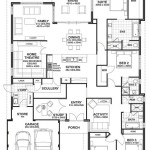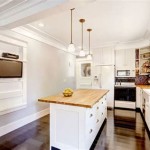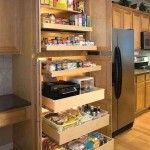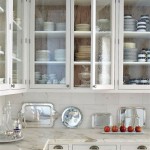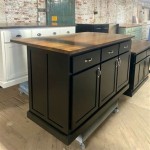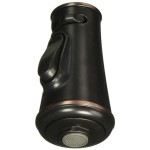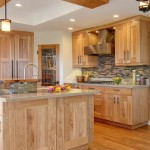Kitchen Cabinet Pulls and Knobs: A Comprehensive Guide to Selection and Installation
Kitchen cabinet pulls and knobs represent more than just functional hardware; they contribute significantly to the overall aesthetic and usability of a kitchen. Selecting the right pulls and knobs requires careful consideration of style, material, size, and installation considerations. This article delves into these factors, providing a comprehensive guide for homeowners and designers alike.
Understanding the Variety of Styles
The world of cabinet hardware offers a diverse range of styles to complement any kitchen design, from traditional to modern. Understanding these styles is crucial for making informed decisions that enhance the desired aesthetic.
Traditional pulls and knobs often feature ornate designs, curves, and antique finishes like oil-rubbed bronze, antique brass, or polished nickel. These styles typically suit kitchens with classic cabinetry designs, such as raised-panel doors and detailed moldings. Common traditional styles include:
Victorian: Characterized by intricate detailing, flowing lines, and a sense of opulence. Victorian pulls and knobs often incorporate floral motifs or elaborate scrollwork.
Georgian: Emphasizes symmetry, balance, and understated elegance. Georgian hardware tends to be more refined and less ornate than Victorian styles, featuring simple curves and clean lines.
Tuscan: Evokes a rustic, old-world charm with textured surfaces and earthy tones. Tuscan pulls and knobs often have a hand-forged appearance and may feature accents like hammered metal or dark finishes.
Transitional styles bridge the gap between traditional and modern aesthetics, offering a versatile option for kitchens that blend different design elements. These pulls and knobs typically feature clean lines with subtle curves or embellishments. Common finishes include brushed nickel, satin chrome, and black matte.
Modern pulls and knobs prioritize simplicity, clean lines, and functionality. They often feature minimalist designs, geometric shapes, and sleek finishes like stainless steel, polished chrome, or matte black. Key modern styles include:
Contemporary: Embraces clean lines, geometric shapes, and a minimalist aesthetic. Contemporary pulls and knobs often have a sleek, streamlined appearance with hidden screws or integrated designs.
Industrial: Draws inspiration from factories and urban environments, featuring rugged materials like metal, concrete, or wood. Industrial pulls and knobs often have a utilitarian look with exposed screws and a raw, unfinished aesthetic.
Mid-Century Modern: Emphasizes organic shapes, natural materials, and a retro vibe. Mid-century modern pulls and knobs often feature wood accents or geometric designs reminiscent of the 1950s and 1960s.
Other notable styles include rustic, farmhouse, and coastal, each offering unique design elements to suit specific kitchen themes. Rustic pulls and knobs often incorporate natural materials like wood, stone, or leather, while farmhouse styles feature a simple, functional aesthetic with a touch of vintage charm. Coastal pulls and knobs often incorporate nautical motifs like seashells, anchors, or rope, and feature light, airy finishes like white, blue, or silver.
Material Considerations and Durability
The materials used in kitchen cabinet pulls and knobs significantly impact their durability, appearance, and overall feel. Selecting the right material requires careful consideration of factors like budget, style preferences, and anticipated usage.
Metal: Metal is a popular choice for cabinet hardware due to its durability, versatility, and wide range of finishes. Common metals used include:
Stainless Steel: Known for its resistance to corrosion and staining, stainless steel is a durable and low-maintenance option. It offers a sleek, modern aesthetic and is suitable for both contemporary and transitional kitchens.
Brass: A classic choice with a warm, elegant appearance. Brass can be polished to a high shine or left with a natural patina for a more rustic look. It's a durable material that can withstand frequent use.
Bronze: Offers a rich, warm tone and a durable finish. Bronze is often used in traditional and rustic kitchens, and can be finished with oil-rubbed bronze, antique bronze, or brushed bronze.
Chrome: Provides a bright, shiny finish and is highly resistant to corrosion. Chrome is a popular choice for modern kitchens and bathrooms due to its sleek, contemporary appearance.
Zinc: A cost-effective alternative to other metals. Zinc can be cast into a variety of shapes and finishes, making it a versatile option for different kitchen styles.
Wood: Wood pulls and knobs offer a warm, natural aesthetic and can be stained or painted to match the surrounding cabinetry. They are often used in rustic, farmhouse, or traditional kitchens. However, wood may not be as durable as metal and may require more maintenance to prevent damage from moisture or wear.
Glass & Crystal: Glass and crystal knobs add a touch of elegance and sparkle to kitchen cabinetry. They are often used in traditional or transitional kitchens and can be paired with metal accents for added durability. However, glass and crystal are more fragile than other materials and may require careful handling.
Ceramic: Ceramic pulls and knobs offer a wide range of colors, patterns, and textures. They are often used in eclectic or vintage-inspired kitchens and can add a unique, personalized touch. Ceramic is relatively durable but can be prone to chipping or cracking if subjected to impact.
When selecting materials, it's important to consider the overall style of the kitchen, the level of durability required, and the budget. Metal hardware is generally the most durable option, while wood, glass, and ceramic offer unique aesthetic qualities. It's also important to choose finishes that are resistant to tarnishing, corrosion, and scratches to ensure long-lasting beauty and performance.
Installation Techniques and Placement Guidelines
Proper installation of kitchen cabinet pulls and knobs is essential for both functionality and aesthetics. Incorrect placement or installation can result in uneven hardware, damaged cabinetry, and an overall unprofessional appearance. The following guidelines provide a framework for successful installation.
Tools and Materials: Before beginning the installation process, gather the necessary tools and materials. Essential tools include a drill with appropriate drill bits (typically sized to match the screw diameter of the hardware), a screwdriver (Phillips head or flathead, depending on the screw type), a measuring tape, a pencil, a level, and a center punch. Additional materials may include a cabinet hardware jig, masking tape, and safety glasses.
Measuring and Marking: Accurate measuring and marking are crucial for ensuring consistent placement of the hardware. Use a measuring tape to determine the desired location for the pulls and knobs on each cabinet door and drawer front. For knobs, the typical placement is centered on the stile (the vertical frame member) of the cabinet door or centered on the drawer front. For pulls, the placement depends on the size and style of the pull. Longer pulls are typically centered on the door or drawer, while shorter pulls may be positioned closer to the edge.
Use a pencil to mark the exact location for the screw holes. A cabinet hardware jig can be a helpful tool for ensuring consistent placement and alignment of the hardware. The jig allows for precise drilling of the screw holes, minimizing the risk of errors.
Drilling Pilot Holes: Once the locations are marked, use a drill to create pilot holes for the screws. Pilot holes are essential for preventing wood splitting and ensuring that the screws are properly aligned. Choose a drill bit that is slightly smaller than the diameter of the screw. Using a center punch before drilling can help prevent the drill bit from wandering, especially on hard surfaces.
Attaching the Hardware: After drilling the pilot holes, carefully attach the pulls and knobs using the appropriate screws. Avoid over-tightening the screws, as this can damage the hardware or the cabinet doors and drawers. Use a screwdriver to tighten the screws until the hardware is snug and secure.
Placement Considerations: The placement of pulls and knobs can impact the overall aesthetic and functionality of the kitchen. Consider the following guidelines when determining hardware placement:
Cabinet Doors: Knobs are generally used on cabinet doors, while pulls are more common on larger or heavier doors. If using pulls, consider placing them vertically on tall cabinet doors and horizontally on base cabinet doors.
Drawers: Pulls are generally used on drawers, especially wider drawers. For narrower drawers, a single knob may suffice. Consider the size and weight of the drawer when determining the appropriate hardware.
Consistency: Maintain a consistent placement of hardware throughout the kitchen for a cohesive and professional look. Use a cabinet hardware jig to ensure uniform placement of pulls and knobs.
Ergonomics: Consider the ergonomics of the hardware placement. Ensure that the pulls and knobs are easily accessible and comfortable to grip. Position the hardware at a height that is convenient for the user.
By following these installation techniques and placement guidelines, homeowners and designers can ensure that their kitchen cabinet pulls and knobs are installed correctly and contribute to the overall beauty and functionality of the kitchen.

How To Choose Between Knobs Or Pulls On Kitchen Cabinets

Trending Cabinet Hardware At Lowe S

Cabinet Hardware The Home

How To Mix And Match Your Kitchen Cabinet Hardware

7 Unique Kitchen Cabinet Hardware Options

Best Kitchen Cabinet Hardware 2024 Hgtv

62 Unique Kitchen Cabinet Hardware Ideas For Your Home Best Cabinets Handles

Cabinet Hardware The Home

How To Install Cabinet Handles Ultimate Stress Free Tips Video

High Polished Luxury Gold Cabinet Pulls Knobs Drawer Etsy

